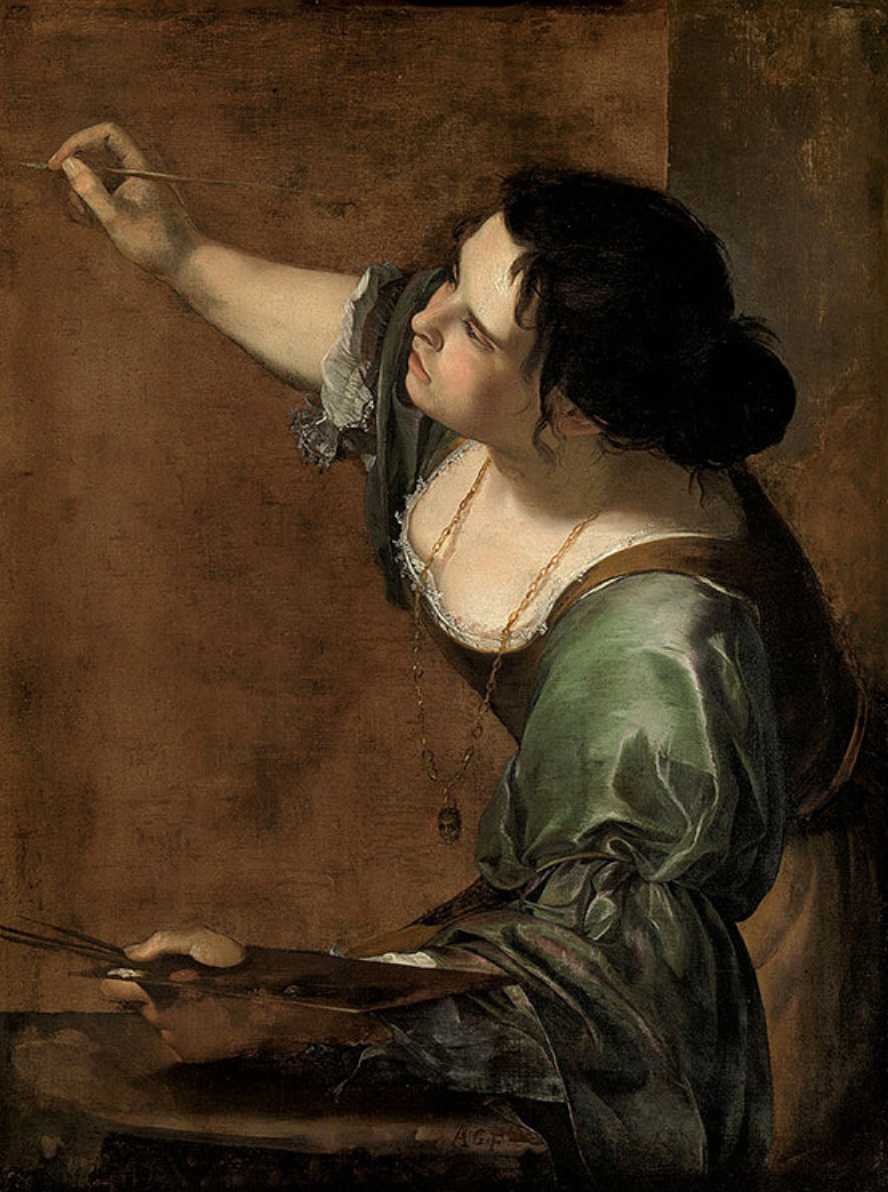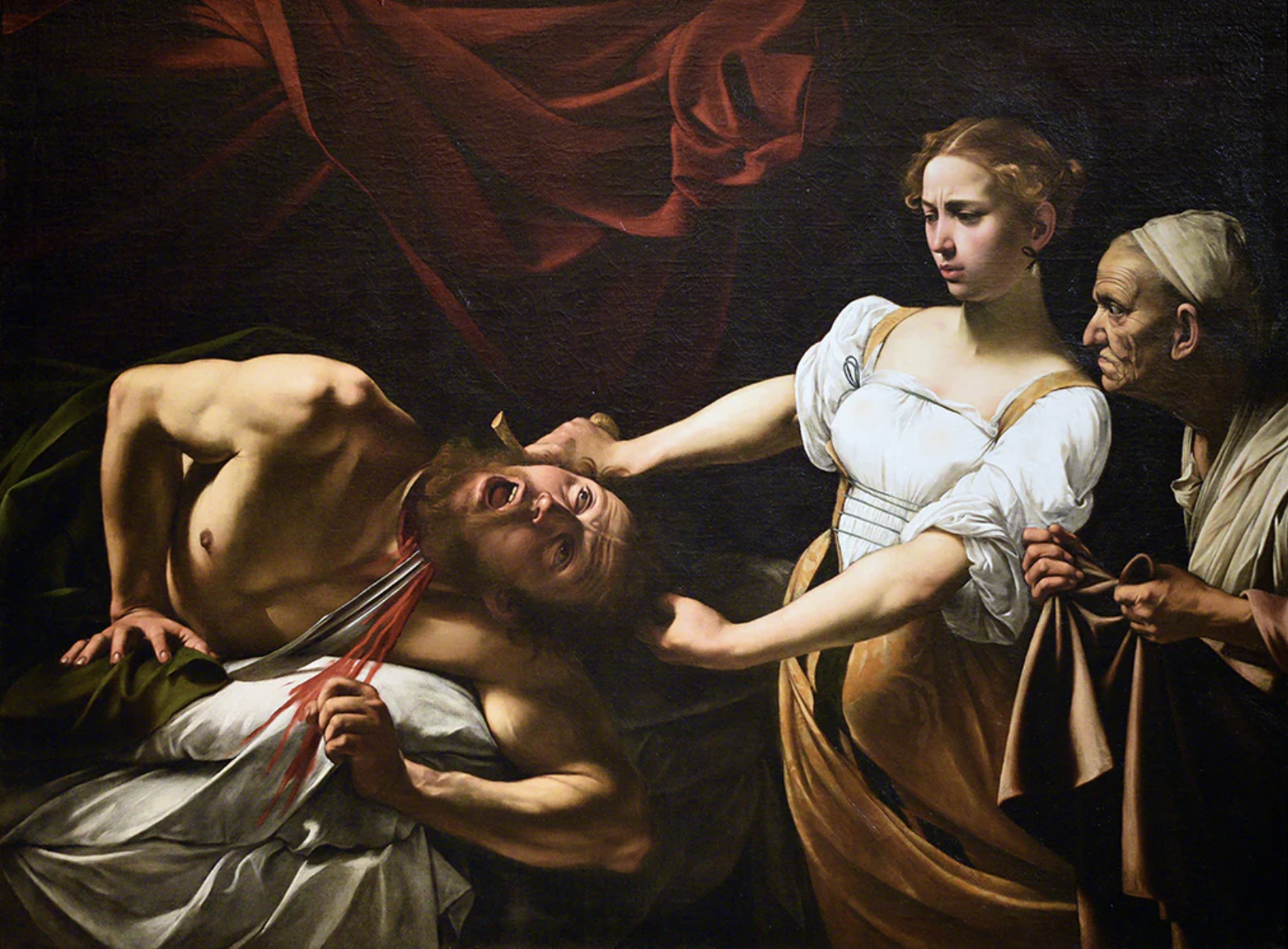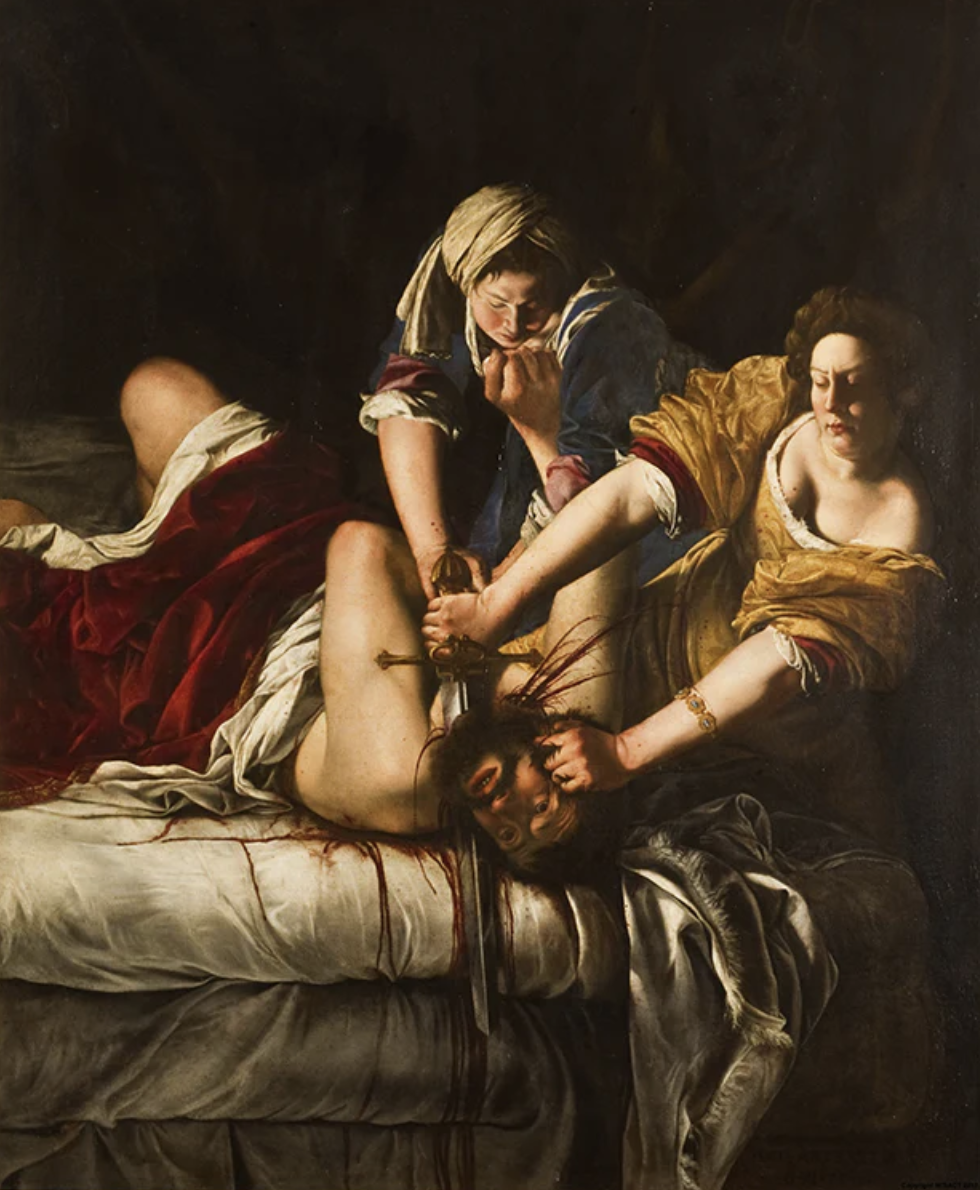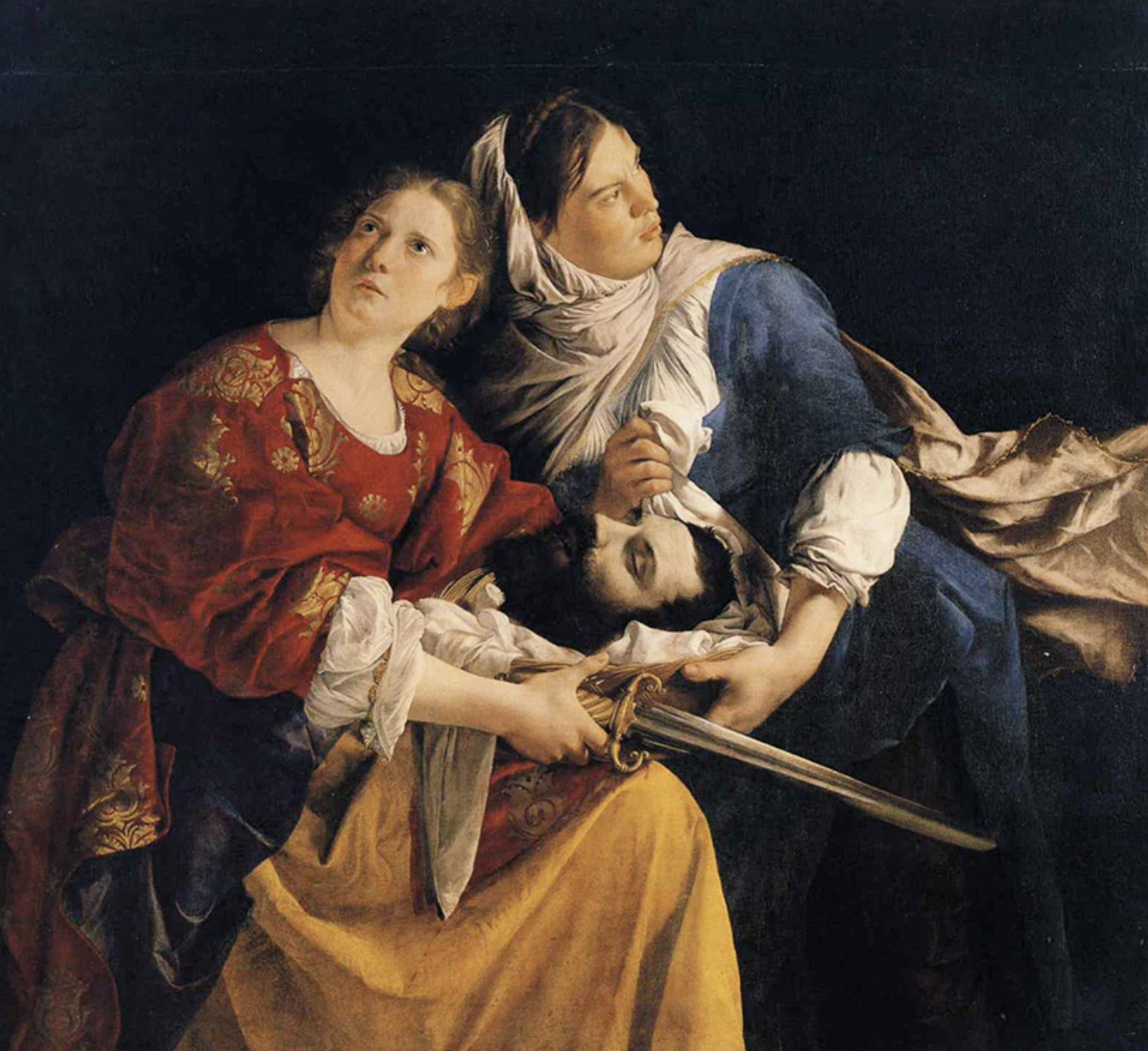Artemisia Gentileschi: Early Career
Perhaps one of the most skilled Baroque painters was one who, despite being a notable figure in her own right, has been barely mentioned in the centuries since her death, aside from being included in mere footnotes of discussions about her father, Orazio Gentileschi (1563-1639).
Born on July 8, 1593, Artemisia Gentileschi was a remarkably skilled Italian painter whose works gained notoriety when they were finally accurately attributed to her, rather than her father, upon their rediscovery in the early twentieth century.[1] "Feminist critics, in particular, have celebrated these works because a skillful and independent female artist created them, but they also yield a gallery of images of a strong woman." [2]
Losing her mother at the age of 12 prompted Artemisia to start painting at a young age, as she worked in her father's workshop. It was not long before she showed good skill and a greater enthusiasm for painting than her brothers. By the time she reached her teenage years, it was evident that her style was influenced not only by her father but also by Caravaggio, with whom her father had been acquainted for a brief time.[3]
Artemisia Gentileschi, "Self-Portrait as the Allegory of Painting" (1638-39), oil on canvas, Royal Collection, LondonArtemisia Gentileschi, "Susana and the Elders" (1610), oil on canvas, Schloss Weibenstein Collection, Pommersfelden, Germany]One of her earliest known paintings, Susana and the Elders (1610) was long thought to be a piece done primarily by her father. However, in 2004, art historian Keith Christiansen gave a more detailed analysis of the technical attributes of the painting, saying that while the work was primarily that of Artemisia, certain areas of the piece could have only been done with the guidance of her father, seeing as how she had not yet finished her training.[4] However, a feminine hand was undoubtedly at work in those brushstrokes. Susana's body and physicality were so accurate that only a woman, someone with a proper understanding of female anatomy, could have achieved this level of detail. "… Artemisia's depiction of female bodies, rather than her replication of her face, that most strongly expresses her understanding of what it was like to be a woman. "The way she portrays the female body is very naturalistic—more so than her father's. "... "This is someone who really knows the hang of a woman's breast—who has a real sense of how a woman's body behaves." [5] Artemisia's knowledge of the human body could, in part, stem from an intimate, albeit unfortunate, understanding of her own.
At about 17, Orazio allowed Donna Tuzia, a family friend, to rent a space within their home. This was around the same time Artemisia painted her rendition of Susana and the Elders. Unfortunately, Tuzia's presence in the house proved to be tumultuous. She was accused of facilitating access to Artemisia[6] for Agostino Tassi, an Italian landscape painter, to rape her. Not only was Tassi a friend of her father's but also one of her instructors.[7] However, when Tuzia was confronted about the ordeal, she acted as if she had no idea what had transpired.
When Tassi refused to marry Artemisia, Orazio brought him to trial to pay for his crimes nearly a year later. Throughout the trial, Artemisia was subjected to extensive scrutiny as Tassi took to the stereotypical defense of not guilty and tried to question her sexual conduct with men. However, even while tortured, Artemisia kept to her story, not wavering at the details of what this man had done to her. Ultimately, with her staying steadfast in her words and Tassi's prior convictions for the rape of his sister-in-law and his previous wife, he was found guilty in 1612.[8] However, even with this outcome, "…this episode overshadows much discussion of the painter and has come to distort our vision of her… biographers and critics have had trouble seeing beyond the rape" [9] and what it means in the context of Artemisia as a painter. Even with that said, it is difficult not to mention it due to the nature of the pieces that she created after the fact and the raw, unadulterated emotion that went into them.
Perhaps one of her most revered works is Judith Beheading Holofernes (1614-1620), a scene that both her father and Caravaggio had also depicted. While the three paintings may share the same theme, the stylistic and overall feeling derived from each could not be more vastly different.
Caravaggio, "Judith Beheading Holofernes" (1599), oil on canvas, National Gallery of Ancient Art in the Barberini Palace, RomeIn Caravaggio's version, the earliest of the three was painted in 1599. You can see Judith grabbing onto the hair of Holofernes as she glides a blade across his throat, revealing a bright, crimson spray of blood. Her face is stoic as she commits the act, and her maidservant stands dutifully to her side with a bag, ready to receive the head. In other renderings of this biblical scene, the viewer typically only witnesses the aftermath of a triumphant Judith and her maidservant carrying the already severed head. Yet, Caravaggio chose to depict the "…rarely represented climactic moment of the actual beheading of Holofernes" [10]. Because of this, he can instill a more profound emotional connection to the subject matter through his dramatic use of chiaroscuro, a technique that employs heightened contrast between light and shadow.[11] The negative spaces behind both Judith and Holofernes offer a sharp contrast to the brightness of skin and clothing, almost as if a camera flash has gone off, freezing them in this static moment. It would not be for another fifteen years that Artemisia would begin her portrayal of this biblical story.
Upon its completion, Judith Beheading Holofernes (1614-1620) "…provoked strong reactions on its arrival in Florence" [12] due to its virility, and "…the painting was denied the honor of being exhibited in the Gallery." [13] Artemisia's depiction is undoubtedly the most gruesome yet vivid representation, with a commanding presence that exceeds that of Caravaggio's version. While it shows an intense physical struggle, in Artemisia, we see vital differences that elevate her piece to an entirely new level. For one, we no longer know the maidservant standing to the side as an idle participant but instead fully involved in the act of beheading a terrified Holofernes. This new dynamic shows "…two strong, young women working in unison, their sleeves rolled up. Their gazes focused, their grips firm. Caravaggio's Judith gracefully recoils from her gruesome task; Artemisia's Judith does not flinch." [14] You can see her determination by how she grips Holofernes' hair, pushing his face into the blood-soaked sheets that sit directly in the viewer's line of sight. The realistic nature of the blood splatter is impossible to miss. Her use of deep reds brings it to life that much more and, in turn, makes the blood spray in the last piece seem almost cartoonish with its one-dimensional tone. Artemisia's ability to wield the oil paint to such a degree and create a work that eclipses a master like Caravaggio shows her raw talent and skill.
Artemisia Gentileschi, "Judith Beheading Holofernes" (1614-1620), oil on canvas, Uffizi Gallery, FlorenceOrazio Gentileschi, "Judith and Her Maidservant with the Head of Holoferne" (1621-1624), oil on canvas, Wadsworth Atheneum Museum of Art, Hartford, ConnecticutOrazio Gentileschi undoubtedly took the most conventional approach when he attempted to illustrate Judith's ordeal. We see Judith and her maidservant after the act has already been committed, with an almost peaceful-looking head of Holofernes sitting in a basket in the center of the composition. The inclusion of blood is nonexistent in comparison, a stark contrast to the other two pieces. We also see Judith and her maidservant facing away from the viewer, seemingly listening for anyone who has heard them; their body language appears timid as if they are almost frightened of what they have just done. In contrast, in both Caravaggio's and Artemisia's pieces, we sense triumph in their actions. This was Orazio's second attempt at this painting, following the first version completed in 1608; yet, there is little difference between the two, with both depicting the woman after her beheading. The critical distinction lies in showing actual blood in the older painting. One is left to wonder why Orazio chose to tone down his second attempt when the pieces before him aired on the grotesque.
Much of what is discussed about Artemisia's life now revolves around a brief period before she had even reached the age of 20. Those short years "…inevitably overshadowed the less sensational and less documented narrative of what followed. Nevertheless, her later career was extraordinary. It is reasonable to conclude that the fact of having been raped was less significant to Artemisia's sense of self than some of her current champions have suggested." [15] Her marriage to Pierantonio Stiattesi, an average painter from Florence, soon after the trial allowed her to regain some of her reputation while taking a blow to his.[16][17]The couple spent numerous formative years in Florence for both their family and Artemisia's career, eventually gaining "…recognition as a painter in the Medici court, under the patronage of the Grand Duke Cosimo de' Medici and the Grand Duchess, Cristina di Lorena." [18] She continued to create significant works of art for decades as she moved through different Italian cities until her presumed death in 1656 in Naples.
Over the years, as more paintings of hers have been rediscovered, both from attributing old works to her "fathers" and from hiding in private collections, views on Artemisia have, and will forever be, evolving.
Source:
1,5,15 - https://www.newyorker.com/magazine/2020/10/05/a-fuller-picture-of-artemisia-gentileschi
2,7,9 - Cohen, Elizabeth S. (Spring 2000). "The Trials of Artemisia Gentileschi: A Rape as History". Sixteenth Century Journal, p.47
3 - https://www.biography.com/artists/artemisia-gentileschi
4 - Christiansen, K. (2004). Becoming Artemisia: Afterthoughts on the Gentileschi Exhibition. Metropolitan Museum Journal, 39, p. 101-126.
6 - Zarucchi, Jeanne Morgan (1998). "The Gentileschi Danaë: A Narrative of Rape". Woman's Art Journal, p. 15
8 - http://www.webwinds.com/artemisia/trial.htm
10 - https://www.caravaggio.org/judith-beheading-holofernes.jsp
11 - https://www.nationalgallery.org.uk/paintings/glossary/chiaroscuro
12,13 - https://www.uffizi.it/en/artworks/judith-beheading-holofernes
14 - https://smarthistory.org/gentileschi-judith-slaying-holofernes/
17 - https://www.theguardian.com/artanddesign/2012/apr/10/artemisia-gentileschi-paris-exhibition-review
18 - https://advancingwomenartists.org/artists/artemisia-gentileschi




